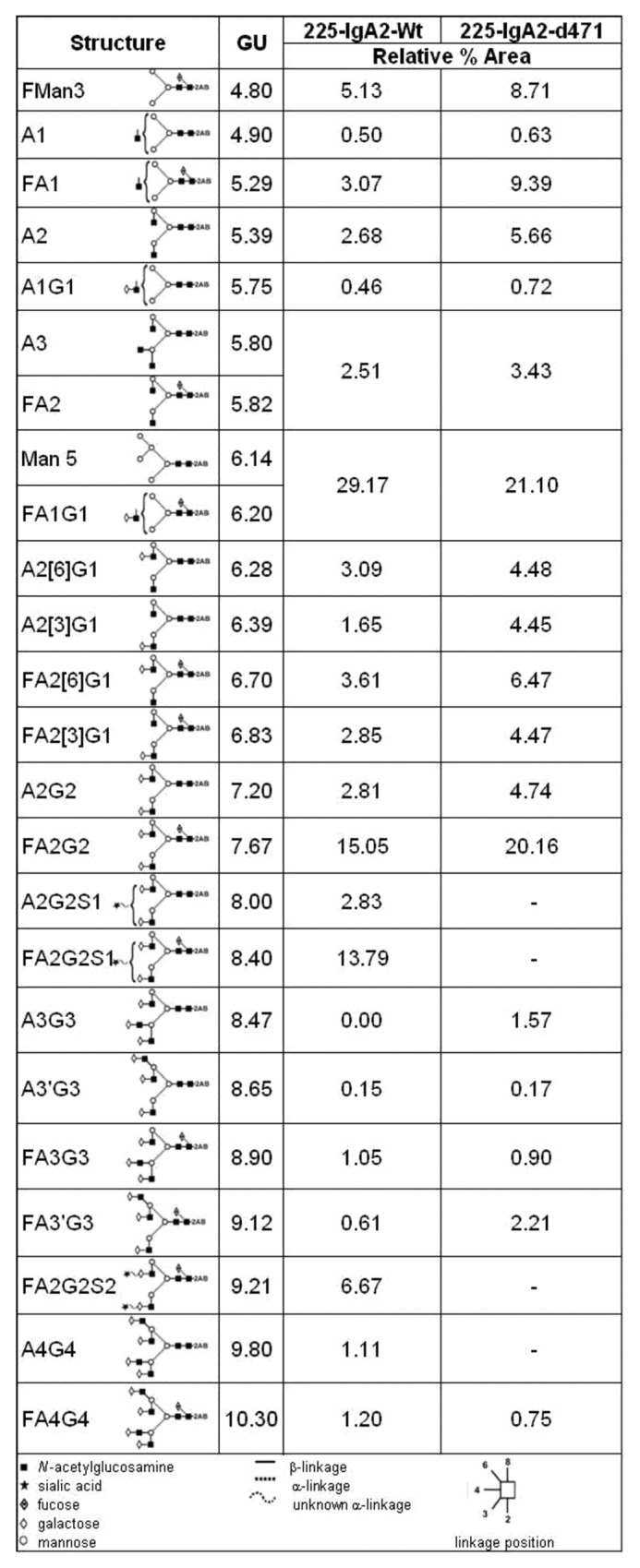
Figure 1. Biochemical characterization of 225-IgA2-d471 and 225-IgA2-wt antibody. (A) Antibody content in supernatants was analyzed by ELISA, and specific production rates were calculated. (B) Affinity-purified antibodies were separated by size exclusion to isolate monomeric antibodies. (C1) Purity of antibodies was analyzed by denaturing SDS-PAGE stained with silver nitrate. (C2) Formation of non-native aggregates was analyzed using native-PAGE stained with Coomassie. Proteins were transferred onto PVDF membranes and probed using polyclonal antibodies against κ- (C3) or α-chain (C4). Lanes: (1) control IgA2, (2) 225-IgA2-wt, 3) 225-IgA2-d471. (D) 225-IgA2-wt and –d471 producing cells were transfected with a pIRESpuro3 plasmid encoding human J-chain to allow the formation of stable dimeric IgA. Proteins were transferred onto PVDF membranes and stained using polyclonal antibodies against human α-chain. Lanes: (1) control IgA2, (2) purified monomeric 225-IgA2-wt, (3) purified monomeric 225-IgA2-d471, (4) 225-IgA2-wt containing SUP from CHO cells transfected with human J chain, (5) 225-IgA2-d471 containing SUP from CHO cells transfected with human J chain, (6) purified dimeric 225-IgA2-wt. (E) The composition of freshly prepared (E1), two (E2) and four (E3) year old preparations of 225-IgA2-wt (lane 1) and 225-IgA2-d471 (lane 2) was analyzed by analytical size exclusion chromatography on a Superdex200 10 × 300 column. (E4) Relative areas under the curve (rAUC) of monomeric (FM, elution volumes 10‒14 ml) and polymeric (FP, elution volumes 6.5–10 ml) IgA were calculated. (F) Thermal stability was analyzed by incubating antibodies at denaturing temperatures and measuring maintenance of functionality in51chromium release assays using A431 as targets and freshly isolated human PMN as effector cells. Results are presented as “mean ± SEM” of “relative specific lysis [%]” of three independent experiments.
